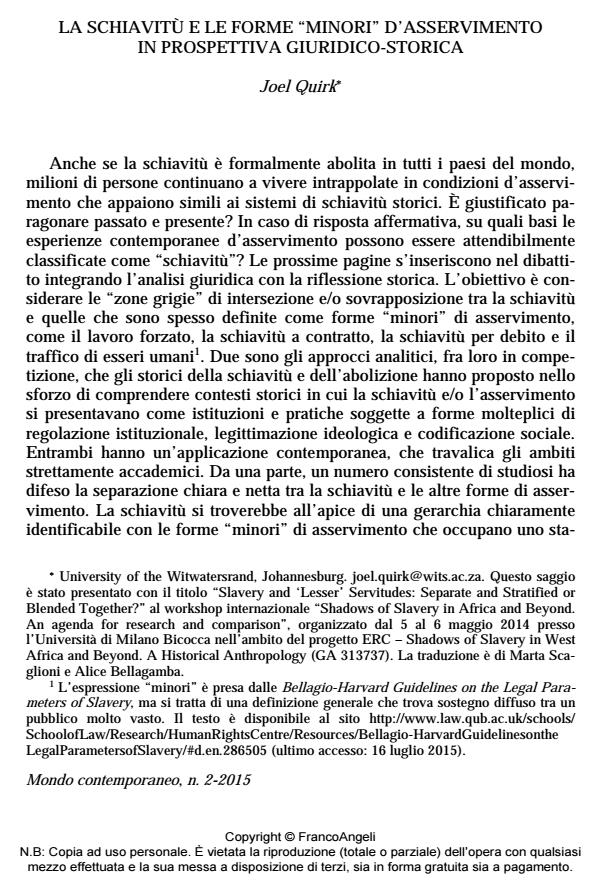Slavery and "Lesser" Forms of Human Bondage in a Juridical-Historical Perspective
Journal title MONDO CONTEMPORANEO
Author/s Joel Quirk
Publishing Year 2015 Issue 2015/2
Language Italian Pages 27 P. 113-139 File size 149 KB
DOI 10.3280/MON2015-002006
DOI is like a bar code for intellectual property: to have more infomation
click here
Below, you can see the article first page
If you want to buy this article in PDF format, you can do it, following the instructions to buy download credits

FrancoAngeli is member of Publishers International Linking Association, Inc (PILA), a not-for-profit association which run the CrossRef service enabling links to and from online scholarly content.
Every country in the world has now legally abolished slavery, yet millions of people continue to be trapped in forms of human bondage regarded as similar to historical slave systems. This article takes up the analysis of these slavery-like forms by thinking through the ramifications of the grey areas of overlap between slavery, on the one hand, and forced labor, indentured servitude, debt-bondage and human trafficking, on the other one. In this respect, historians of slavery and abolition have developed two major approaches. The first treats slavery as a hierarchically separate category, whilst the second argues that slavery has tended to overlap with other forms of human bondage. This article aims to demonstrate that the second approach, which can be succinctly described as "blended together", is better suited to capturing the ambiguities that have characterized post-abolition experiences of human bondage. From a political and ideological standpoint, the "blended- together" approach highlights the problems inherent in the widespread construction of slavery as an exceptional evil.
Keywords: Slavery, coercion, human trafficking, forced labor, human bondage, post-abolition
- Abolitionism and the Persistence of Slavery in Italian States, 1750–1850 Giulia Bonazza, pp.167 (ISBN:978-3-030-01348-6)
Joel Quirk, La schiavitù e le forme "minori" d’asservimento in prospettiva giuridico-storica in "MONDO CONTEMPORANEO" 2/2015, pp 113-139, DOI: 10.3280/MON2015-002006